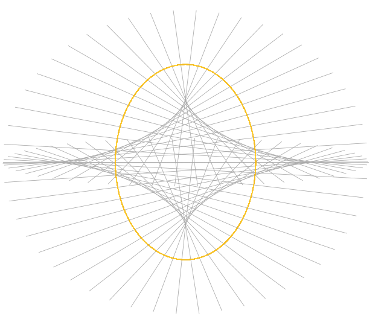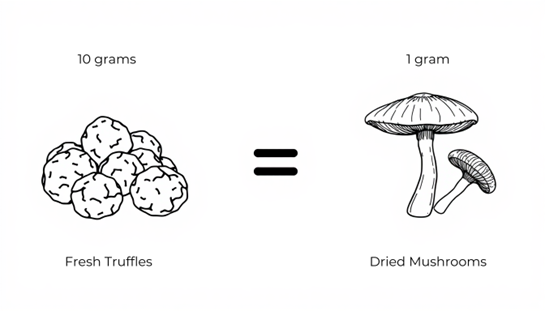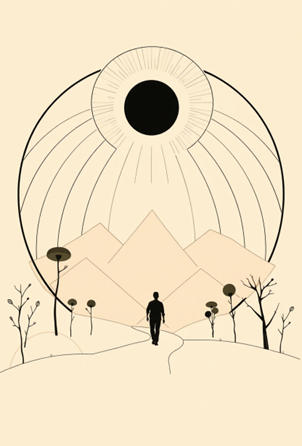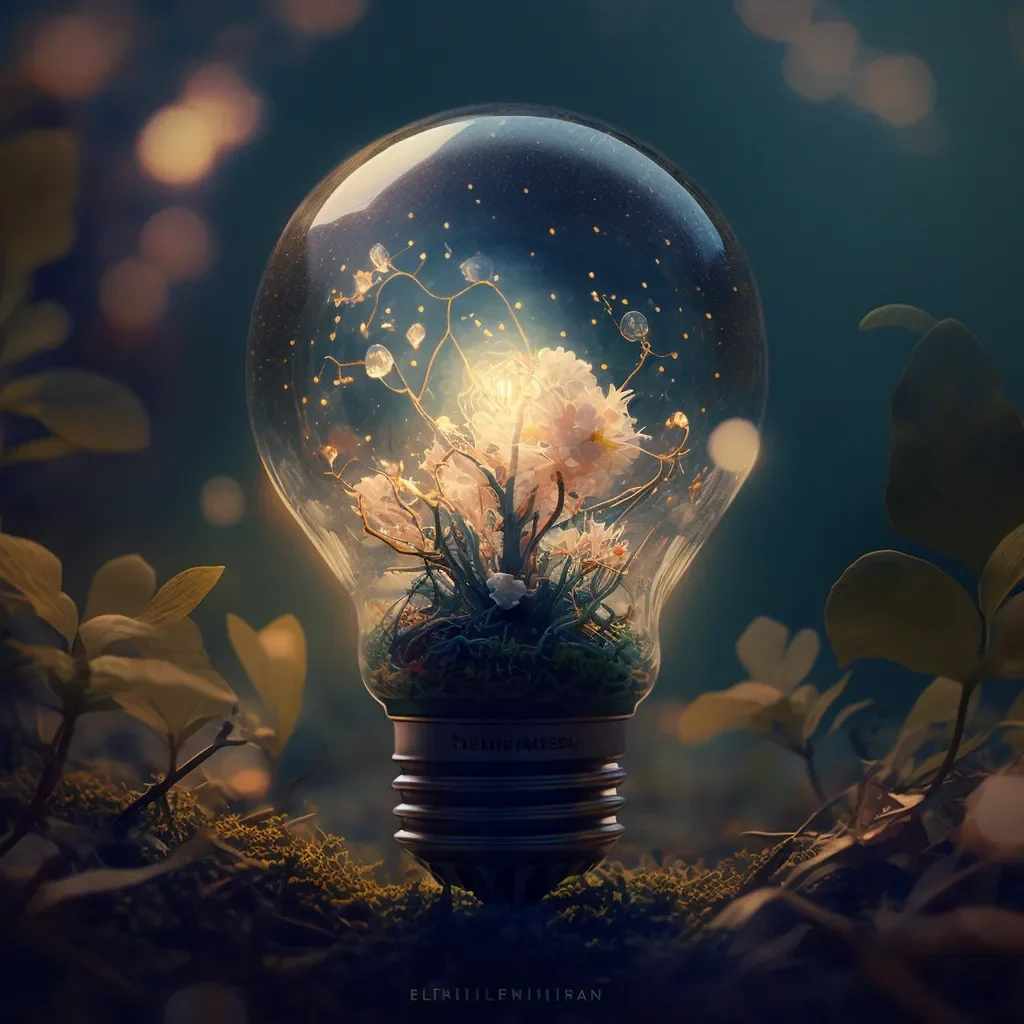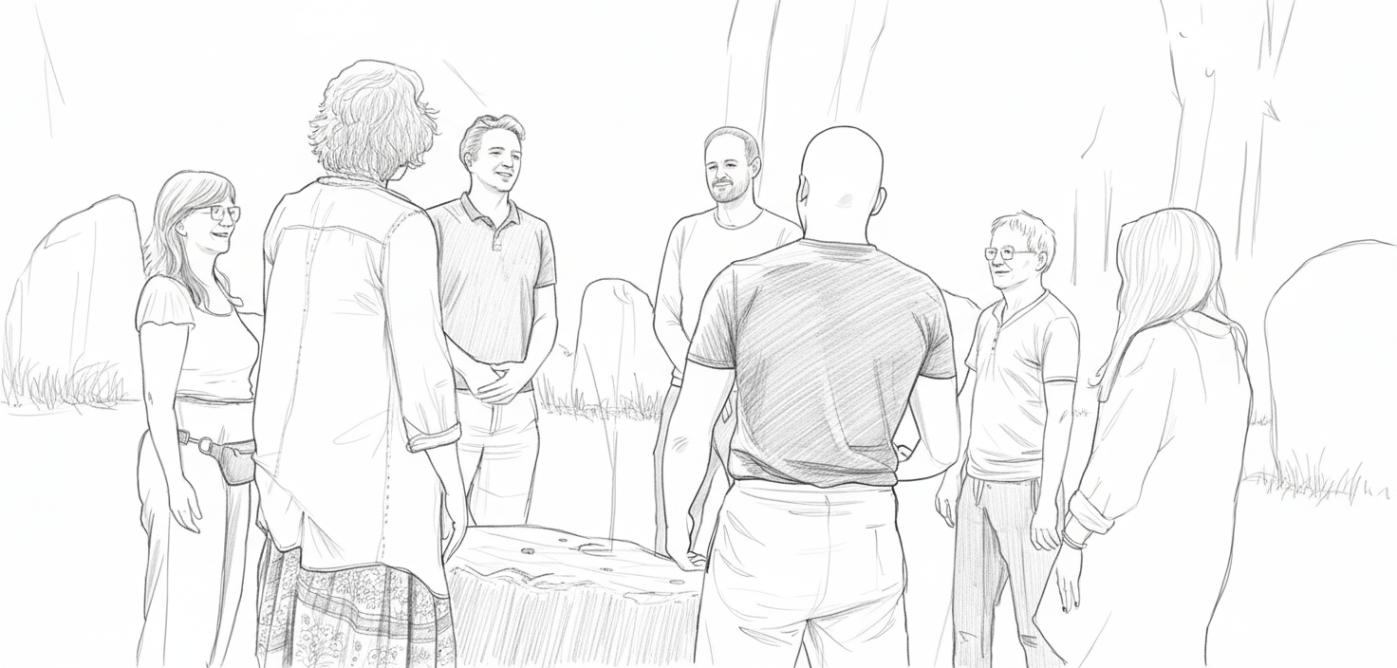Contributing Author
Fancisca Niklitschek
In this article, we invite you to explore what is psilocybin, the psychoactive compound found in magic truffles and magic mushrooms. This guide will help you discover this fascinating world that can transform your perception and well-being.
Magic Truffles vs. Magic Mushrooms: Let’s explore how they relate to one another
Psilocybin Truffles, often called Magic Truffles, are an interesting form of psychoactive fungi closely related to magic mushrooms. Instead of mushrooms, which are the structures that emerge above ground, truffles are the underground storage of the fungus, known scientifically as sclerotia. Sclerotia serves to store nutrients allowing the fungus to remain in tough conditions.
Just like cultivating psilocybin mushrooms, psilocybin sclerotia can be lab-cultivated, which involves growing psilocybin mushroom spores in controlled environments and intentionally preventing conditions from becoming ideal for full mushroom development. As a result, the fungi remain in the sclerotia stage – which is known as truffle – and are harvested when they reach their full size, usually within about 3 months, depending on environmental conditions and the specific strain [1]. At this stage, the sclerotia are manually collected and cleaned of any remaining residue.
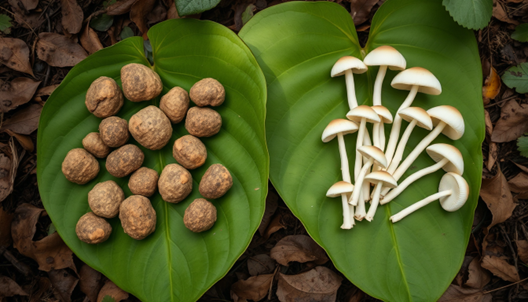
Image created with Dall-E:
On the left, you see psilocybin truffles, and on the right, psilocybin mushrooms.
Both magic truffles and magic mushrooms contain the same psychedelic compound called psilocybin, which is responsible for their transformative effects on consciousness through a psychedelic experience. When consumed, psilocybin is converted into psilocin, which is responsible for profound shifts in the mind. However, only a few mushroom species produce this unique substance.
Among the strains that contain psilocybin, we can find Psilocybe Mexicana, a native species from Mexico – also known as “Pajaritos” or “Little Birds” – that holds a long history of use in indigenous spiritual practices. Another notable strain is Psilocybe Cubensis, also known as “Golden Teacher”, which is one of the most common strains of psilocybin mushrooms and relatively beginner-friendly due to its psilocybin content. Additionally, Psilocybe Tampanensis, often referred to as the “Philosopher’s Stone” is known for producing sclerotia, which, as we learned earlier, are the magic truffles responsible for inducing altered states of consciousness.
Although the psychedelic journey with truffles is much like that of mushrooms there are some differences in how they are consumed.
What are the Key Differences Between Magic Truffles and Magic Mushrooms?
The clearest difference between truffles and mushrooms lies in their appearance. Mushrooms, which grow above ground, can take on a variety of shapes and sizes which lead to variations in the concentration of psilocybin per gram. This means that the potency of a mushroom can vary significantly from one to another.
On the other hand, truffles – which develop underground – have a small and compact shape, resulting in a more accurate consistency in the amount of psilocybin contained in each one. This uniformity in potency makes it possible to offer a more predictable experience.
Another key difference is that truffles contain less water, giving them a firmer and more rugged texture. In contrast, mushrooms continue to be softer and more flexible, even after they have been dried. It’s because of these differences in consistency that a larger quantity of fresh truffles is needed to match the intensity of dried mushroom. Typically, 1 gram of dried mushrooms is roughly equivalent to about 10 grams of fresh truffles.
Image created with Dall-E:
Comparison of amounts required to reach the same effect.
In terms of the intensity of the journey, there are no notable differences between consuming truffles or magic mushrooms, as both contain psilocybin, the compound that generates the psychedelic experience. Consuming either can set you on a transformative journey, giving way to a sense of connection and fulfillment and leading to a deeply introspective state. Through this experience, you are able to explore the depths of your mind, uncover hidden emotions, and connect with the world around you in ways that are profoundly enriching.
A perceived difference among people, although not scientifically supported, is that truffles are sometimes considered less intense than mushrooms. This perception might stem from how truffles are typically sold and consumed: they are often more precisely weighed, clearly labeled with their potency, and come with detailed usage instructions. This encourages those who choose truffles to consume them more carefully, leading to the impression that their effects are gentler. Moreover, chewing 2 grams of dried mushrooms is easier than doing so with the equivalent of 20 grams of fresh truffles. This is why it might well be that people end up consuming more dried mushrooms per trip than they would with magic truffles.
However, and that’s the important point, the intensity of the journey doesn’t depend on whether people consume mushrooms or truffles, but solely on the amount of psilocybin they are ingesting.
The Legal Landscape of Magic Truffles a.k.a. Psilocybin Truffles
Magic truffles are restricted in many countries, although they enjoy a special status in the Netherlands, where they are fully legal, VAT-taxed, and can be bought in licensed smart-shops. This makes the country a unique destination for those interested in exploring psychedelic experiences. Unlike magic mushrooms, which were banned in 2007 in the Netherlands, truffles were exempted from this prohibition, allowing them to remain available on the market.
One of the key benefits of this legal framework is the ability to regulate the dosage of truffles with greater precision. Because truffles are legally sold across the country, they are carefully labeled, often with detailed information about their potency. This makes it much easier to measure and control their intake, leading to a safer and more predictable experience and reducing the risk of unexpected or overwhelming effects.
The availability of legal truffles has also fostered a culture of responsible consumption. Those interested in exploring the psychedelic effects of magic truffles can benefit from professional guidance and participate in psilocybin-assisted retreats in the Netherlands with truffle ceremonies, such as those offered by Evolute Institute. This approach to consumption not only enhances individual safety but also fosters a more positive and transformative psychedelic experience. If you want to learn more about our psilocybin retreats, we invite you to read here.
Exploring the Mystical World of Psilocybin
As we learned before, psilocybin is a powerful psychedelic compound found in certain types of fungi commonly known as “magic truffles” and “magic mushrooms”. This ancient substance has induced countless spiritual journeys and transformative experiences across time, serving as a key contributor to humanity’s quest for inner wisdom and personal growth. Its renewed interest in modern science highlights its remarkable effects and potential for personal and collective transformation and healing. To dive deeper into the history of psychedelics and their cultural uses over time, check out our article on the History of Psychedelics.
When consumed, psilocybin is converted into psilocin in the body, which is the psychoactive compound responsible for its psychedelic effects. Psilocin primarily interacts with serotonin receptors in the brain, leading to alterations in how the brain processes sensory and emotional information. Research has shown that psychedelics, with psilocybin being a leading example, can induce changes in brain connectivity, fostering an altered state of consciousness and often a sense of unity with the environment and oneself. To learn more about how psilocybin affects the brain, explore our article Your Brain on Psychedelics: Intro to the Neuroscience of Psilocybin.
Studies have also shown that psychedelic experiences, including those facilitated by psilocybin, can have positive effects on mental health issues such as depression, anxiety, addiction, and post-traumatic stress disorder (PTSD) [1]-[3]. This emerging evidence highlights the potential of psilocybin as a therapeutic tool, offering new hope for people who have struggled with these conditions and have not found relief through traditional therapies.
Psilocybin can offer experiences that are deeply transformative. It has the ability to invite introspection and generate a profound sense of unity with the universe. Synesthesia often occurs, blending senses in captivating ways, colors may be heard, and sounds seen. Time perception also changes, it may stretch and shift, while an enveloping sense of transcendence and spiritual connection often emerges. If you’re interested in understanding more about these experiences, you might want to read A Peek Inside the Psychedelic Experience.
Image created with Dall-E:
Psilocybin as a doorway to deep self-reflection
Typically, a psilocybin trip lasts between four to eight hours, influenced by the dose and the individual’s sensitivity. The impact of the journey can be further enhanced by a designed environment that supports individuals throughout the experience, ensuring its effects resonate long after the psychedelic journey concludes.
For those seeking a carefully curated setting that aligns with their personal need for professionalism and outstanding quality, Evolute Institute offers psilocybin retreats that are thoughtfully created to provide a legal, safe, and profound experience. To find out which retreat in the Netherlands might resonate most with you, explore our article How to Pick a Psychedelic Retreat that Resonates with your Personal Values and Beliefs.
But What Are the Benefits of Psilocybin? Is it More Than Just an Experience?
To understand the positive effects of psilocybin, we’ll divide the analysis into two types of ingestion: microdosing and macrodosing.
Microdosing refers to taking a small, sub-perceptual amount of psilocybin over a prolonged period of time (usually 2-3 months with several ingestions per week), aiming to subtly improve daily life aspects such as creativity and general well-being. While many people report positive experiences with microdosing, the scientific support is still limited and calls for further research. If you are interested in learning more details about all the existing science on microdosing, you can read our in-depth article linked here.
In contrast, macrodosing involves consuming a substantial dose of psilocybin, leading to a more intense and enriching experience. When consumed in safe settings with professional facilitation, people often describe these experiences as some of the most profound and transformative of their lives, comparable with major life events such as the birth of a child or the loss of a loved one [4]. This profound impact is supported by scientific evidence which indicates that under the right conditions, macrodosing is both safe and effective [5]–[8]. Remarkably, many people find that a single macrodose, especially with psilocybin, can lead to lasting improvements in emotional well-being, self-understanding, and spiritual growth, as long as the experience is well integrated after the journey ends [4].
Additionally, psilocybin has demonstrated potential for inducing positive changes in various psychological dimensions, including mood enhancement, spiritual well-being, and increased neuroplasticity: the brain’s ability to reorganize and form new neural connections [9]–[14].
While the effects of psilocybin show promising potential, it is essential to acknowledge the associated risks. The psychedelic experience can be profoundly challenging for some people, potentially leading to episodes of anxiety or paranoia. It is important to notice that these challenges, often referred to as “bad trips”, can present opportunities to confront and process deep-seated emotions and traumas and they offer a window to transform your life. Of course, the preconditions for leveraging difficult psychedelic experiences for your personal growth are a safe and professional environment and thorough mental and emotional preparation and integration. For further information about the challenges and complexities of a challenging experience, explore The Paradox of the Bad Trip.
If the idea of a psilocybin retreat resonates with you, and you’re interested in exploring its effects in a safe and expertly guided environment, Evolute Institute specializes in accompanying people through legal, professionally facilitated, and medically supervised psilocybin truffle journeys in the Netherlands.
At Evolute Institute, a group psilocybin truffle ceremony is designed as a unique and deeply personal journey toward profound inner growth. Our psilocybin retreats with magic truffles are supported by a multidisciplinary team of experts (medical doctors, psychologists, Gestalt therapists, psychedelic facilitators, integration experts, leadership coaches, and breathwork experts), all dedicated to creating a space where you can embark on a deeply transformative journey.
Image created with Dall-E: Join the journey and take a step closer to awakening your true potential
Imagine stepping into a space where every moment is created to be safe, supportive, and transformative. From the start, you’ll engage in thoughtful preparation and connect with others in a meaningful way, setting the stage for a powerful and immersive experience. During the ceremony, you’ll explore new dimensions of your consciousness, and afterward, you’ll receive guidance to help integrate these insights into your everyday life. With expert support by your side, this retreat is a special chance to explore the depths of your mind, uncover new possibilities for personal growth, deeper self-exploration, and align more closely with your true purpose.
Ready to explore this transformative experience further? Discover what a psilocybin retreat at Evolute Institute can offer you by reading What to Expect from a Psilocybin Group Retreat at Evolute Institute. For an inspiring glimpse into the transformative journeys of others, we invite you to immerse yourself in an inspiring first-person narrative here.
Bibliography
[1] J. Gartz, J. W. Allen, and M. D. Merlin, “Ethnomycology, biochemistry, and cultivation of Psilocybe samuiensis Guzman, Bandala and Allen, a new psychoactive fungus from Koh Samui, Thailand,” Journal of Ethnopharmacology, vol. 43, no. 2, pp. 73-80, 1994.
[2] Y. Yao, D. Guo, T. S. Lu, F. L. Liu, S. H. Huang, M. Q. Diao, … & Y. Han, “Efficacy and safety of psychedelics for the treatment of mental disorders: A systematic review and meta-analysis,” Psychiatry Research, vol. 115886, 2024.
[3] H. C. Santos and J. G. Marques, “What is the clinical evidence on psilocybin for the treatment of psychiatric disorders? A systematic review,” Porto Biomedical Journal, vol. 6, no. 1, p. e128, 2021.
[4] R. L. Carhart-Harris, M. Bolstridge, J. Rucker, C. M. Day, D. Erritzoe, M. Kaelen, … & D. J. Nutt, “Psilocybin with psychological support for treatment-resistant depression: an open-label feasibility study,” The Lancet Psychiatry, vol. 3, no. 7, pp. 619–627, Jul. 2016.
[5] R. R. Griffiths, W. A. Richards, U. McCann, and R. Jesse, “Psilocybin can occasion mystical-type experiences having substantial and sustained personal meaning and spiritual significance,” Psychopharmacology (Berl.), vol. 187, no. 3, pp. 268–283, Aug. 2006, doi: 10.1007/s00213-006-0457-5.
[6] A. T. Hodge, S. Sukpraprut-Braaten, M. Narlesky, and R. C. Strayhan, “The Use of Psilocybin in the Treatment of Psychiatric Disorders with Attention to Relative Safety Profile: A Systematic Review,” J. Psychoactive Drugs, vol. 55, no. 1, pp. 40–50, Jan. 2023, doi: 10.1080/02791072.2022.2044096.
[7] S. Dodd et al., “Psilocybin in neuropsychiatry: a review of its pharmacology, safety, and efficacy,” CNS Spectr., vol. 28, no. 4, pp. 416–426, Aug. 2023, doi: 10.1017/S1092852922000888.
[8] P. Sharma et al., “Psilocybin history, action and reaction: A narrative clinical review,” J. Psychopharmacol. (Oxf.), vol. 37, no. 9, pp. 849–865, Sep. 2023, doi: 10.1177/02698811231190858.
[9] D. Kaminski and J. P. Reinert, “The Tolerability and Safety of Psilocybin in Psychiatric and Substance-Dependence Conditions: A Systematic Review,” Ann. Pharmacother., p. 10600280231205645, Oct. 2023, doi: 10.1177/10600280231205645.
[10] D. B. Goel and S. Zilate, “Potential Therapeutic Effects of Psilocybin: A Systematic Review,” Cureus, vol. 14, no. 10, p. e30214, doi: 10.7759/cureus.30214.
[11] J. van Amsterdam and W. van den Brink, “The therapeutic potential of psilocybin: a systematic review,” Expert Opin. Drug Saf., vol. 21, no. 6, pp. 833–840, Jun. 2022, doi: 10.1080/14740338.2022.2047929.
[12] S. Shnayder, R. Ameli, N. Sinaii, A. Berger, and M. Agrawal, “Psilocybin-assisted therapy improves psycho-social-spiritual well-being in cancer patients,” J. Affect. Disord., vol. 323, pp. 592–597, Feb. 2023, doi: 10.1016/j.jad.2022.11.046.
[13] K. M. Baker, C. M. Ulrich, and S. H. Meghani, “An Integrative Review of Measures of Spirituality in Experimental Studies of Psilocybin in Serious Illness Populations,” Am. J. Hosp. Palliat. Med., vol. 40, no. 11, pp. 1261–1270, Nov. 2023, doi: 10.1177/10499091221147700.
[14] E. Whinkin, M. Opalka, C. Watters, A. Jaffe, and S. Aggarwal, “Psilocybin in Palliative Care: An Update,” Curr. Geriatr. Rep., vol. 12, no. 2, pp. 50–59, Jun. 2023, doi: 10.1007/s13670-023-00383-7.
[15] R. Nardou et al., “Psychedelics reopen the social reward learning critical period,” Nature, vol. 618, no. 7966, Art. no. 7966, Jun. 2023, doi: 10.1038/s41586-023-06204-3.

Patrick Liebl,
Lead Facilitator & Integration Expert
Is the Retreat program right for your personal growth journey?
We invite you to schedule a call with us. Together, we can explore any questions or concerns you may have. We can explore whether this program is right for you at this time and ensure you feel confident about and ready to embrace this transformative experience.
“We are here to support your exploration, at your pace, with no expectations.” – Patrick Liebl
